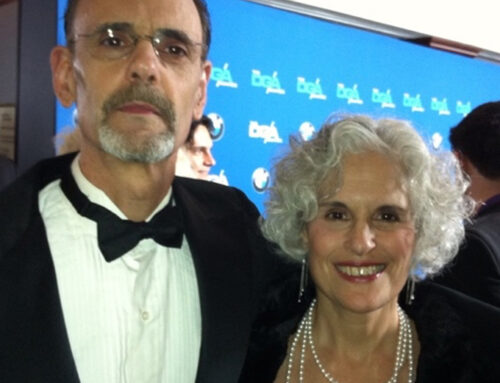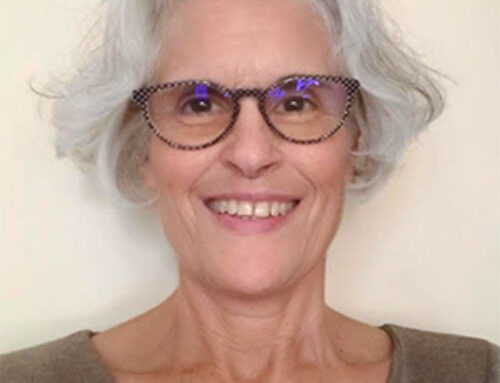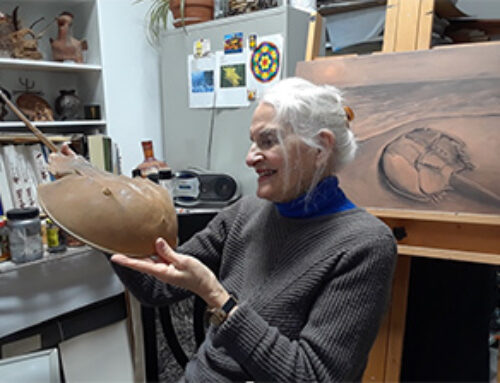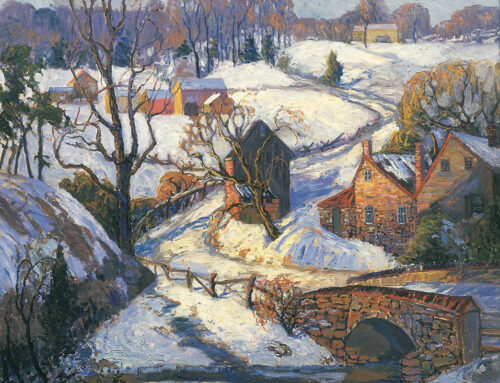Mary Alice Orito
SB: How did this amazing journey in the arts begin for you? Was it an active part of your life from your early beginnings?
MAO: As far back as I can remember my mother used to say ”She’s doodling somewhere, always drawing that girl!” My mother, having survived the Great Depression, World War II and the early death of my father, was motivated by practicality rather that creativity. She and my family were focused on surviving and the arts seemed elusive and unnecessary. The arts were for the rich, the privileged, and thus not available to me as I am from a middle-class family. However, I am one of the lucky ones, my high school teachers recognized my creativity and convinced my mother to send me to college and then on to Parsons School of Design which my mother saw as a “trade school” NOT an “art school”. She had conditions: I had to pay for my room and board. She’d pay the first year of tuition, but then I had to get scholarships, loans, etc. I think she thought I’d give up and then return to Kansas. I didn’t.
SB: Tell us something about how geography has impacted your art, if at all?
MAO: The wheat fields of Kansas will forever be in my visual memory. They’re like the ocean – vast and forever moving. I love torn paper. Somehow in my mind that translates to the multiple subtle shadows and textures of the wheat fields. The image changes as you move closer or further away from the piece. It’s cohesive and complicated at the same time.
When did you make New York City your home and how has that affected your artmaking?
MAO: I fell in love with the skyline of NYC on a postcard sent to me by my paternal grandmother. My heart skips a beat every time I see the skyline. I came to NYC when I was 19 and have not lived anywhere other than NYC. I am now eighty. I’ve traveled the world, but my heart and soul are forever here. The diversity, the museums, the amazing and yet horrifying political and socioeconomic juxtapositions captivated me and opened the door of my creativity by constantly providing inspiration.
In addition, the serendipity of my life allowed me to work side by side at Margaret Moore’s Jewelry for two years with Eva Hesse when I was going to Parsons (9/1961-5/1964). Her love of line and composition are drilled into my mind. NYC and NAWA introduced me to so many artists that I would have never met had I remained in Kansas. I am forever grateful for the upheaval.

Beasty2
SB: You have made a successful career for yourself as a therapist. Has your approach to understanding the human psyche carried over to your creative approach to a project?
MAO: My life is filled with serendipity. I worked as a sportswear designer and costume designer for both off Broadway, television, and music videos for 26 years. I share an Emmy for costume design. One thing led to another. One door closed, another opened.
In 1988, there was an 8 ½ month writer’s strike in NYC which forced the closing of all things creative in the entertainment field as we were all unionized. I had to earn a living and was fortunate to have a friend who knew a friend, who knew about an opening in another field. I was interviewed, hired, and I became a novice group counselor for an inpatient rehab at Beth Israel Medical Center. This morphed into certification for a career as a substance abuse counselor, which morphed into Clinical Social Work Masters (psychotherapist) from NYU, and finally into my own private practice. I had a full-time job at BI and worked nights and weekends in my private practice.
This journey into the psyche of men and women led me into many concepts, including feminism, racism, lack/abundance, choice, and intent. With my art, I seldom know what direction I may take. I start with my life long ‘doodling’: the process of getting the “in” out. Sometimes that leads to simply drawing, but most often to some sort of mixed media piece. Also, words, phrases or titles influence my art. In other words, sometimes I enter the piece from the back door – title then piece.
SB: Has your artwork changed and/or evolved over your years of practicing it?
MAO: I realize this is arrogant, snobbish, but I was so sick of designing anything that said ‘commercial’ (read salable/ nothing new/ tired and boring); consequently, when I could carve out some free time to draw or work on art I just wanted to experiment. So, yes. My work changed and changed and changed from 1974 to present. Galleries could not see me as profitable due to a lack of cohesive work or what they thought was a lack of discipline. NAWA was helpful for me as it presented the opportunity to apply for themed exhibitions throughout the USA. It is not hard to do this as I have many skills that embrace creative redundancy. What is hard is I’d rather experiment, so the work from 2019 is with intent and determination. I joined an artist run gallery in 2019 and am forcing myself to do ‘stories’ or ‘themes’. It’s a privilege to work with successful and renowned women artists. I remain a ‘paper’ artist: paper marche, torn, cut paper, drawing on paper, etc. Paper is the bedrock of my work.
SB: Has success at promoting your art been influenced by gender? If so, how?
MAO: Alas, gender is still an enormous determining factor. Women remain underrepresented in galleries and museums. From the 60’s to now, Caucasian artists have gone from about 10% total representation to 11% representation and only 14 percent of exhibition galleries. Progress remains glacially slow but certain. Giving credit where credit is due, museums are trying to be more diverse by showing more women and different races and cultures.
NAWA taught me a lot about PR; however, I did not openly promote my work other than keeping my resume up to date and by applying for available exhibitions. Also, the arts, like any field or any profession, is bound by and built on rules and protocol. I did not hit the ground knowing this. I had to learn a lot about the nuts and bolts of promoting art before I could think about doing it for my own art. I am 24/7 torn—should I do commercial, understandable, and salable art or experiment? It’s a constant tug between reality and longing.

Other Wordly Worm
SB: You have been a long supporter of NAWA and its mission in supporting women artists. How do you see this work continuing in the future?
MAO: I was a two term NAWA president and held multiple positions within the organization and Board. I had a long history of having worked for corporations, so coming up with new ideas wasn’t difficult, but the concepts were often not possible. Susan G. Hammond was most helpful guiding me through the rules and regulations of a NON-PROFIT which is what NAWA is. We are a cohesive group of determined women artists and dedicated lovers of the arts. I was always proud of how many outside gallery opportunities the leaders provided the members. I’ve been part of the slow and now permanent online changes which have led the organization into the online gallery opportunities in addition to the brick-and-mortar galleries. NAWA is always changing to accommodate the current group of women artists and reward their efforts. Non-profits are run by volunteers. Your leaders are NAWA members who volunteer their time and effort as they value the organization.
SB: Do you have any advice for young women in their creative pursuit of the arts today?
MAO: Give yourself the chance to find your own voice. We are all important, even if we’ve been told we aren’t. You can’t expect to be understood all the time: after all, we are creating something that doesn’t exist. It takes guts to put yourself out there and to compete in the world of art. If necessary, ‘Act As If’ because it takes time to become the artist you will be. It’s a lot easier to remain determined and productive when you are compelled to do the art you want to do. By practicing daily, you gain the necessary skills that make dreams become reality.













